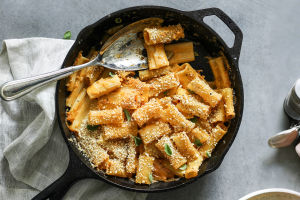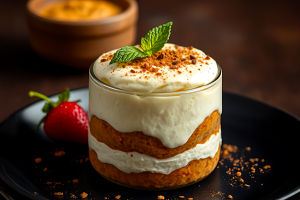Who doesn't love a rich, velvety slice of cheesecake? Whether you enjoy it plain, topped with berries, or infused with chocolate, cheesecake is one of the most universally adored desserts.
But as any home baker knows, creating the perfect cheesecake—smooth, creamy, and crack-free—can feel like an intimidating challenge. If you've ever struggled with a sunken center or rubbery texture, you're not alone.
In this guide, we'll walk through the essential steps to baking a cheesecake that looks and tastes like it came straight from a bakery.
Choose the Right Ingredients
The foundation of a great cheesecake starts with its ingredients. Always use high-quality cream cheese—preferably full-fat varieties. Low-moisture cream cheese helps ensure a firm yet creamy texture. For a rich flavor, use fresh eggs, pure vanilla extract, and full-cream sour cream or heavy cream.
As for the base, graham biscuit crumbs are the classic choice, but you can use crushed cookies or digestive biscuits for variety. Don't forget to add a bit of melted butter and sugar to hold the crust together.
Mastering the Crust
To make a firm crust that complements the creamy filling, pulse the biscuit or cookies until fine, mix them with melted butter and sugar, and press the mixture firmly into the bottom of a springform pan. Bake the crust for about 10 minutes at 160°C (325°F) to set it before adding the filling. This step prevents sogginess and gives the cake a crisp foundation.
Some bakers like to press the crust up the sides of the pan, while others prefer a flat bottom. Both work well—it's just a matter of preference.
Achieving the Creamy Texture
The secret to a smooth, creamy filling lies in proper mixing. All your ingredients should be at room temperature to avoid lumps. Start by beating the cream cheese until it's completely smooth. Add sugar gradually, then mix in the eggs one at a time. Avoid overmixing once you add the eggs, as this can introduce air and lead to cracking.
Finally, fold in sour cream or heavy cream. This adds moisture and ensures a silky texture. A tablespoon of cornstarch or flour can help stabilize the filling without compromising creaminess.
Baking It Just Right
Baking is where things can go very right—or very wrong. Many bakers swear by the water bath method to maintain even baking and prevent cracks. Wrap the outside of the springform pan with foil to prevent water from leaking in, then place it in a larger pan filled with hot water.
Bake at a low temperature—around 150°C (300°F)—for 60 to 75 minutes, or until the outer edges are set and the center is slightly jiggly. Overbaking can result in a dry texture, while underbaking can leave it too soft to hold together.
The Crucial Cooling Process
This step is often overlooked, but it's essential to avoid cracks and preserve that perfect texture. Once baked, turn off the oven and let the cheesecake cool inside with the door slightly open for about an hour. This gradual cooling prevents sudden temperature changes that can cause the cake to split.
After that, transfer the cake to the counter to cool to room temperature, then refrigerate it for at least four hours, preferably overnight. This sets the texture and makes slicing cleaner and easier.
Creative Toppings and Flavors
While a classic New York-style cheesecake is always a hit, you can personalize your creation with various flavors and toppings. Swirl in fruit purée like raspberry or mango for a marbled look. Add a chocolate ganache layer for extra richness. Or top it with fresh berries, caramel sauce, or toasted nuts for a beautiful and tasty finish.
Want to go a step further? Infuse the filling with flavors like lemon zest, espresso, or matcha for a twist that surprises and delights.
Common Problems and How to Fix Them
• Cracks on top? Likely due to overbaking or rapid cooling. Always follow gradual cooling methods.
• Soggy crust? Ensure you pre-bake the crust and wrap the pan tightly for a water bath.
• Too dense or rubbery? This often results from overmixing or baking at too high a temperature. Use gentle mixing and a low oven setting.
Each cheesecake is a learning experience, so don't get discouraged. Even the imperfect ones taste amazing!
Health Notes and Expert Tips
According to registered dietitian Keri Gans, occasional desserts like cheesecake can be enjoyed as part of a balanced diet when consumed mindfully. Choose smaller portions and use real ingredients for better satisfaction. Additionally, replacing a portion of cream cheese with yogurt or using a thinner crust can help reduce richness while maintaining flavor.
Conclusion: Ready to Bake?
Now that you've learned the secrets to baking the perfect cheesecake—from crust to cooling—are you ready to try it yourself? Don't be afraid to experiment with flavors and textures. Whether you're baking for a celebration or just a weekend treat, your homemade cheesecake will surely impress.
What flavor are you excited to try first? Share your baking results or cheesecake ideas—we'd love to hear how your sweet creation turns out!


